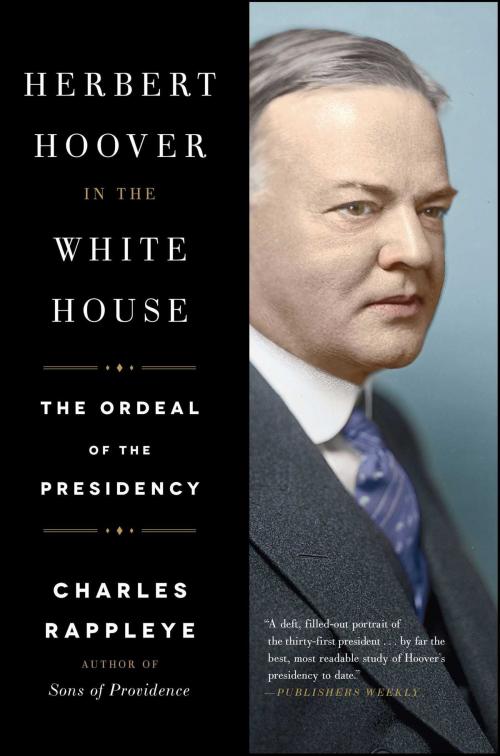Herbert Hoover in the White House
The Ordeal of the Presidency
Business & Finance, Economics, Economic History, Nonfiction, History, Americas, United States, 20th Century, Biography & Memoir, Political| Author: | Charles Rappleye | ISBN: | 9781451648690 |
| Publisher: | Simon & Schuster | Publication: | May 10, 2016 |
| Imprint: | Simon & Schuster | Language: | English |
| Author: | Charles Rappleye |
| ISBN: | 9781451648690 |
| Publisher: | Simon & Schuster |
| Publication: | May 10, 2016 |
| Imprint: | Simon & Schuster |
| Language: | English |
“A deft, filled-out portrait of the thirty-first president…by far the best, most readable study of Herbert Hoover’s presidency to date” (Publishers Weekly) that draws on rare and intimate sources to show he was temperamentally unsuited for the job.
Herbert Clark Hoover was the thirty-first President of the United States. He served one term, from 1929 to 1933. Often considered placid, passive, unsympathetic, and even paralyzed by national events, Hoover faced an uphill battle in the face of the Great Depression. Many historians dismiss him as merely ineffective. But in Herbert Hoover in the White House, Charles Rappleye investigates memoirs and diaries and thousands of documents kept by members of his cabinet and close advisors to reveal a very different figure than the one often portrayed. This “gripping” (Christian Science Monitor) biography shows that the real Hoover lacked the tools of leadership.
In public Hoover was shy and retiring, but in private Rappleye shows him to be a man of passion and sometimes of fury, a man who intrigued against his enemies while fulminating over plots against him. Rappleye describes him as more sophisticated and more active in economic policy than is often acknowledged. We see Hoover watching a sunny (and he thought ignorant) FDR on the horizon, experimenting with steps to relieve the Depression. The Hoover we see here—bright, well meaning, energetic—lacked the single critical element to succeed as president. He had a first-class mind and a second-class temperament.
Herbert Hoover in the White House is an object lesson in the most, perhaps only, talent needed to be a successful president—the temperament of leadership. This “fair-handed, surprisingly sympathetic new appraisal of the much-vilified president who was faced with the nation's plunge into the Great Depression…fills an important niche in presidential scholarship” (Kirkus Reviews).
“A deft, filled-out portrait of the thirty-first president…by far the best, most readable study of Herbert Hoover’s presidency to date” (Publishers Weekly) that draws on rare and intimate sources to show he was temperamentally unsuited for the job.
Herbert Clark Hoover was the thirty-first President of the United States. He served one term, from 1929 to 1933. Often considered placid, passive, unsympathetic, and even paralyzed by national events, Hoover faced an uphill battle in the face of the Great Depression. Many historians dismiss him as merely ineffective. But in Herbert Hoover in the White House, Charles Rappleye investigates memoirs and diaries and thousands of documents kept by members of his cabinet and close advisors to reveal a very different figure than the one often portrayed. This “gripping” (Christian Science Monitor) biography shows that the real Hoover lacked the tools of leadership.
In public Hoover was shy and retiring, but in private Rappleye shows him to be a man of passion and sometimes of fury, a man who intrigued against his enemies while fulminating over plots against him. Rappleye describes him as more sophisticated and more active in economic policy than is often acknowledged. We see Hoover watching a sunny (and he thought ignorant) FDR on the horizon, experimenting with steps to relieve the Depression. The Hoover we see here—bright, well meaning, energetic—lacked the single critical element to succeed as president. He had a first-class mind and a second-class temperament.
Herbert Hoover in the White House is an object lesson in the most, perhaps only, talent needed to be a successful president—the temperament of leadership. This “fair-handed, surprisingly sympathetic new appraisal of the much-vilified president who was faced with the nation's plunge into the Great Depression…fills an important niche in presidential scholarship” (Kirkus Reviews).















